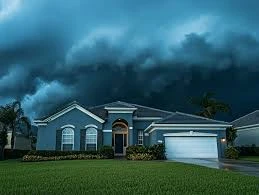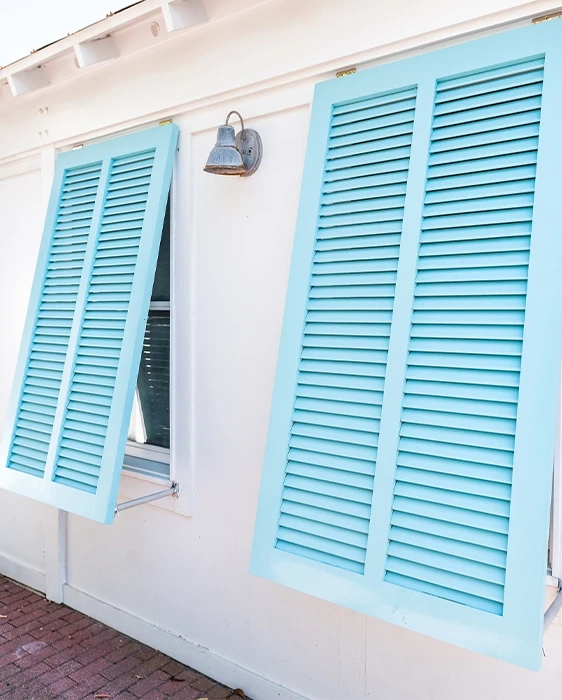 Every year, hurricane season brings a new wave of challenges for Florida homeowners. With increasingly powerful storms and unpredictable weather patterns, preparing your property is no longer optional; it’s essential. Effective hurricane protection in Florida goes beyond boarding up windows; it’s about safeguarding your home, family, and long-term investment with the right mix of prevention, maintenance, and innovation. Whether you live along the Gulf Coast or inland, having a comprehensive hurricane preparedness plan can make all the difference when disaster strikes.
Every year, hurricane season brings a new wave of challenges for Florida homeowners. With increasingly powerful storms and unpredictable weather patterns, preparing your property is no longer optional; it’s essential. Effective hurricane protection in Florida goes beyond boarding up windows; it’s about safeguarding your home, family, and long-term investment with the right mix of prevention, maintenance, and innovation. Whether you live along the Gulf Coast or inland, having a comprehensive hurricane preparedness plan can make all the difference when disaster strikes.
Why Hurricane Preparation Is Critical
Florida’s geographic location makes it one of the most hurricane-prone states in the U.S. From the Panhandle to the Keys, residents face risks of high winds, heavy rain, flooding, and flying debris. A single weak point, like an unsecured window, poor drainage, or outdated roofing, can lead to catastrophic damage. Proper hurricane protection not only minimizes repair costs but also helps ensure your family’s safety and peace of mind.
To help you stay one step ahead of the storm, here’s the ultimate checklist for creating a truly storm-ready home.
1. Inspect and Reinforce Your Roof
Your roof is your home’s first line of defense during a hurricane. Regular inspections are vital, especially before hurricane season. Look for missing shingles, weak seals, or cracks in flashing. Reinforce the roof with hurricane straps or clips that secure it to the walls, reducing the risk of lift-off during extreme winds. If your roof is aging, consider upgrading to impact-resistant materials designed for Florida’s storm conditions.
2. Secure Windows and Doors
Windows and doors are common points of failure during hurricanes. Installing impact-rated windows or hurricane shutters can prevent shattering and protect your interior from water and debris. Metal, accordion, or Bahama shutters provide excellent strength, while modern storm fabrics offer lightweight yet durable alternatives. Don’t forget to reinforce garage doors, these large openings can collapse under pressure if not properly braced.
3. Protect Outdoor Areas and Landscaping
Trim trees and remove weak branches that could become projectiles. Secure patio furniture, potted plants, and decorative items, or store them indoors. Even small objects can cause significant damage when carried by hurricane-force winds. Ensure gutters and downspouts are clean to prevent water buildup and roof leaks.
4. Check Electrical and Plumbing Systems
Power outages and flooding are common during hurricanes. Install surge protectors to shield appliances and consider a backup generator for essential systems like refrigeration and communication. If you live in a flood-prone area, elevate electrical components above potential water levels. Ensure your plumbing is sealed to prevent backflow from storm surges.
5. Review Home Insurance and Emergency Supplies
Before hurricane season, review your insurance policy to ensure it covers wind and flood damage. Keep an updated inventory of valuables with photos and receipts. Assemble a disaster supply kit including water, non-perishable food, flashlights, first aid materials, batteries, and important documents stored in a waterproof container.
6. Strengthen Your Home During Renovations
When undertaking home improvement projects, like a kitchen remodel in Clearwater or a bathroom renovation, consider incorporating hurricane-resistant materials and structural upgrades. For example, reinforced windows, moisture-resistant cabinetry, and elevated electrical outlets can protect your investment and increase your home’s resilience. Many homeowners now use remodels as an opportunity to upgrade overall safety features rather than just aesthetics.
7. Create a Family Emergency Plan
Every member of your household should know what to do before, during, and after a hurricane. Establish evacuation routes, identify local shelters, and plan how you’ll communicate if cell networks fail. Keep a “go bag” ready with essentials for each family member, including medications and personal items.
8. Maintain Year-Round Vigilance
Hurricane preparedness isn’t a one-time effort. Schedule regular maintenance checks throughout the year, especially for roofing, windows, and landscaping. Technology like smart home sensors can alert you to leaks or pressure changes during storms, helping you act quickly.
Conclusion
A truly storm-ready home blends prevention, preparation, and proactive upgrades. Investing in high-quality hurricane protection in Florida not only shields your property from damage but also enhances your home’s safety, comfort, and value. By following this checklist and planning ahead, you can face hurricane season with confidence, knowing your home is built to withstand whatever nature brings.



